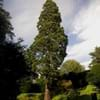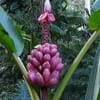Life Span
Perennial
Perennial
Type
Needled or Scaled Evergreen
Perennial
Origin
Western United States, California
Eastern Europe
Types
not available
Not Available
Habitat
coastal environs, Coastal Regions, Humid climates
Terrestrial
USDA Hardiness Zone
8-9
4-9
Sunset Zone
4, 5, 6, 7, 8, 9, 14, 15, 16, 17, 18, 19, 20, 21, 22, 23, 24
1a, 1b, 2a, 2b, 3a, 3b, 4, 5, 6, 7, 8, 9, 10, 11, 12, 13, 14, 15, 16, 17, 18, 19, 20, 21, 22, 23, 24
Habit
Pyramidal
Clump-Forming
Flower Color
Not Available
Yellow, Lavender, Blue Violet
Flower Color Modifier
Bicolor
Bicolor
Fruit Color
Brown
Not Available
Leaf Color in Spring
Dark Green
Green, Sea Green
Leaf Color in Summer
Dark Green
Green, Sea Green
Leaf Color in Fall
Dark Green
Green, Sea Green
Leaf Color in Winter
Dark Green
Light Green
Leaf Shape
Lanceolate
Lanceolate
Plant Season
Spring, Summer, Fall, Winter
Spring, Summer
Sunlight
Full Sun, Partial Sun
Full Sun, Partial Sun
Growth Rate
Very Fast
Medium
Type of Soil
Loam
Loam, Sand
The pH of Soil
Acidic, Neutral
Neutral
Soil Drainage
Well drained
Well drained
Bloom Time
Not Available
Spring, Late Spring, Early Summer
Tolerances
Wet Site
Drought
Where to Plant?
Ground
Ground
How to Plant?
Seedlings, Stem Planting
By dividing rhizomes, tubers, Seedlings
Plant Maintenance
Medium
Medium
Watering Requirements
Requires regular watering
Average Water Needs, Do Not over Water
In Summer
Lots of watering
Lots of watering
In Spring
Moderate
Moderate
In Winter
Average Water
Average Water
Soil pH
Acidic, Neutral
Neutral
Soil Type
Clay, Loam, Sand
Loam, Sand
Soil Drainage Capacity
Well drained
Well drained
Sun Exposure
Full Sun, Partial Sun
Full Sun, Partial Sun
Pruning
Prune in winter, Prune lower leaves
Remove damaged leaves, Remove dead branches, Remove dead leaves
Fertilizers
Compost, Mulch, organic fertlizers
All-Purpose Liquid Fertilizer
Pests and Diseases
Bark beetles, Scale, Spider mites, Tip Miners
Red blotch
Plant Tolerance
Wet Site
Drought
Flower Petal Number
Not Available
Single
Fragrant Bark/Stem
Yes
No
Foliage Texture
Fine
Coarse
Foliage Sheen
Matte
Matte
Attracts
Not Available
Hummingbirds
Allergy
Asthma, Red eyes, Skin irritation, Toxic
Skin irritation
Aesthetic Uses
Showy Purposes
Showy Purposes
Beauty Benefits
Not Available
Not Available
Environmental Uses
Shadow Tree, Wildlife
Air purification
Medicinal Uses
Not Available
No Medicinal Use
Part of Plant Used
Whole plant
Not Available
Other Uses
used for making roof trusses, poles, joists, piles, Used in construction, Wood is used for making furniture
Used as Ornamental plant
Used As Indoor Plant
No
No
Used As Outdoor Plant
Yes
Yes
Garden Design
Shade Trees, Street Trees
Alpine, Edging, Mixed Border, Rock Garden, Wall
Botanical Name
SEQUOIA sempervirens
IRIS pumila
Common Name
Redwood
Dwarf Iris
In Hindi
Coast Redwood
Dwarf Iris
In German
Redwoodbaum
Zwergiris
In French
côte Redwood
Dwarf Iris
In Spanish
Redwood Coast
Enano Iris
In Greek
ακτή Redwood
νάνος Ίρις
In Portuguese
costa Redwood
Dwarf Iris
In Polish
Wybrzeże Redwood
Dwarf Iris
In Latin
Coast Redwood
Iris Dwarf
Phylum
Coniferophyta
Magnoliophyta
Class
Pinopsida
Liliopsida
Family
Cupressaceae
Iridaceae
Clade
Not Available
Angiosperms, Monocots
Tribe
Not Available
Irideae
Subfamily
Sequoioideae
Iridoideae
Number of Species
Not Available
Difference Between Coast Redwood and Dwarf Iris
If you are confused whether Coast Redwood or Dwarf Iris are same, here are some features about those plants to help you choose better. Many people think that these two plants have the same characteristics, but one can see Coast Redwood and Dwarf Iris Information and learn more about it. Fertilizers required for proper growth of Coast Redwood are Compost, Mulch and organic fertlizers, whereas for Dwarf Iris fertilizers required are All-Purpose Liquid Fertilizer. Hence, one should know the basic difference between Coast Redwood and Dwarf Iris if you are planning to have them in your garden to enhance its beauty.
<
Flowering PlantsImportance of Coast Redwood and Dwarf Iris
Want to have the most appropriate plant for your garden? You might want to know the importance of Coast Redwood and Dwarf Iris. Basically, these two plants vary in many aspects. Compare Coast Redwood and Dwarf Iris as they differ in many characteristics such as their life, care, benefits, facts, etc. Every gardener must at least have the slightest clue about the plants he wants to plant in his garden. Compare their benefits, which differ in many ways like facts and uses. The medicinal use of Coast Redwood is Not Available whereas of Dwarf Iris is No Medicinal Use. Coast Redwood has beauty benefits as follows: Not Available while Dwarf Iris has beauty benefits as follows: Not Available.
Compare Facts of Coast Redwood vs Dwarf Iris
How to choose the best garden plant for your garden depending upon its facts? Here garden plant comparison will help you to solve this query. Compare the facts of Coast Redwood vs Dwarf Iris and know which one to choose. As garden plants have benefits and other uses, allergy is also a major drawback of plants for some people. Allergic reactions of Coast Redwood are Asthma, Red eyes, Skin irritation and Toxic whereas of Dwarf Iris have Skin irritation respectively. Having a fruit bearing plant in your garden can be a plus point of your garden. Coast Redwood has no showy fruits and Dwarf Iris has no showy fruits. Also Coast Redwood is not flowering and Dwarf Iris is flowering. You can compare Coast Redwood and Dwarf Iris facts and facts of other plants too.





